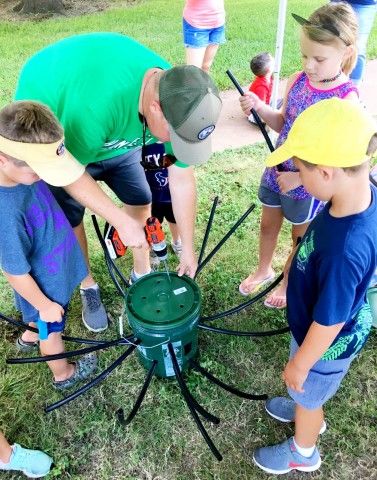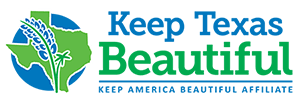Each year, the Governor’s Community Achievement Awards (GCAA) celebrate ten Texas communities for their outstanding efforts to keep their communities beautiful. From the Texas coast to the Panhandle, the Texas Department of Transportation (TxDOT) has awarded cities with this honor since 1986. Winners are selected for their ability to engage citizens, local businesses, schools, and other organizations in environmental improvement initiatives. Categorized by population, these ten cities share an award of $2 million in landscaping projects. Keep Texas Beautiful (KTB) and TxDOT have worked together to administer the GCAA for more than 30 years. The GCAA 2020 application is officially open. Review the application and apply at ktb.org/gcaa.
Applications are due on Thursday, March 4 at 5 p.m. CST. In the months leading up to the deadline, we will be sharing last year’s ten winners, who were recognized at the KTB Virtual Conference in 2020. Interested in applying for GCAA? Join us on Thursday, January 21 to hear from our past winners. Register to attend here.
Category 2: Weston Lakes
Population 3,001-5,500
Landscape Award: $110,000
City of Weston Lakes (CoWL) is a small city outside of Houston with a population of 3,346. In recent years, the city and its surrounding area have experienced exponential growth, making CoWL especially conscious of environmental protection.
With help from Keep Weston Lakes Beautiful, residents have been committed to unique projects that strengthen the community and beautify its spaces. KWLB and its volunteers oversee the litter prevention of approximately 35 city street miles collecting over 1.6 tons of litter in 2019.
Carol Fairbank, the President of KWLB says that GCAA has ” given our organization and City such a sense of overwhelming pride and achievement and we are incredibly grateful.”
CoWL is also committed to educating and engaging volunteers of all ages. In 2019, KWLB hosted four summer educational programs, totaling 161 youth participants. The curriculum included learning of Texas native birds, Monarch butterfly migration and life cycle, and building fish habitats.






